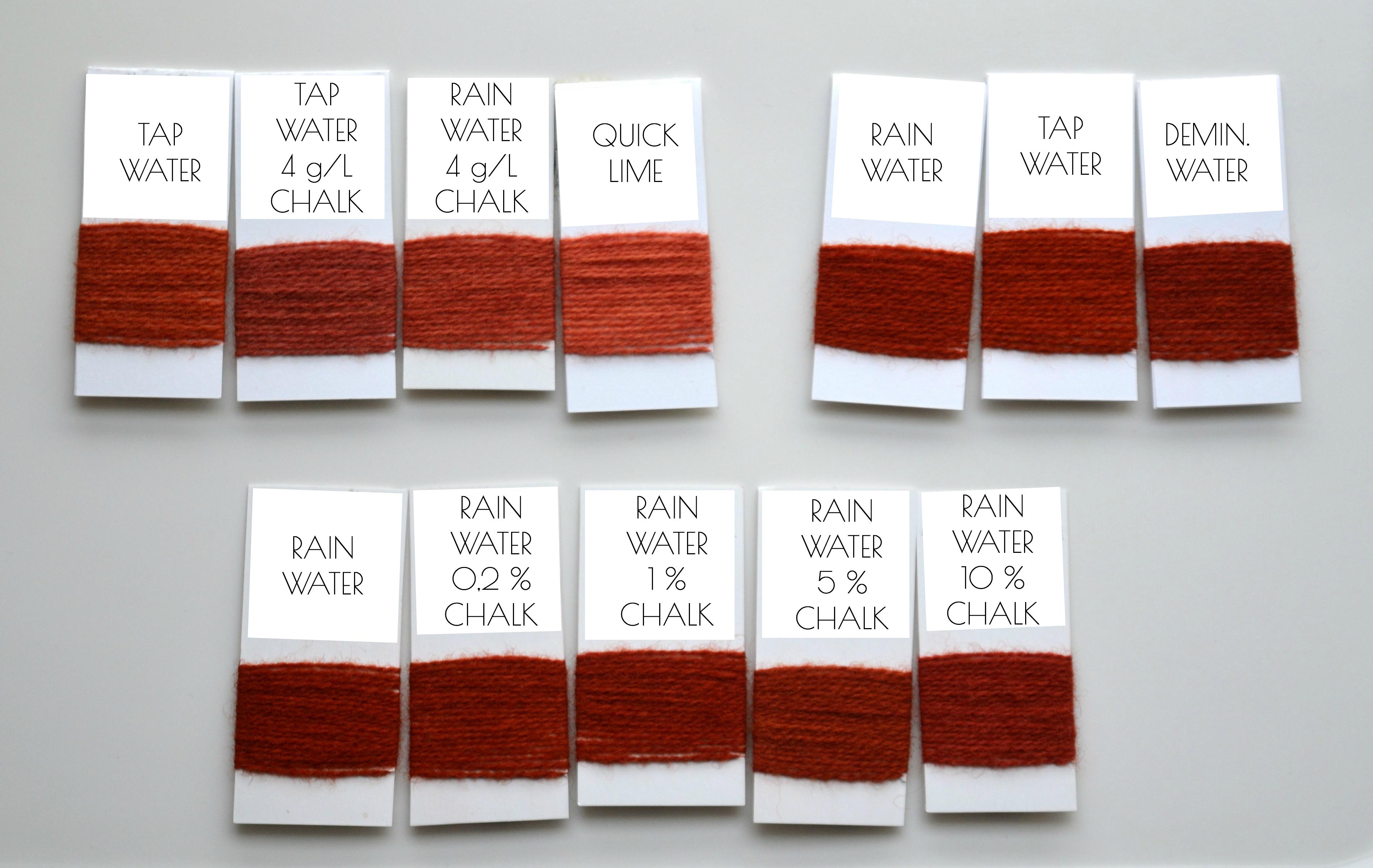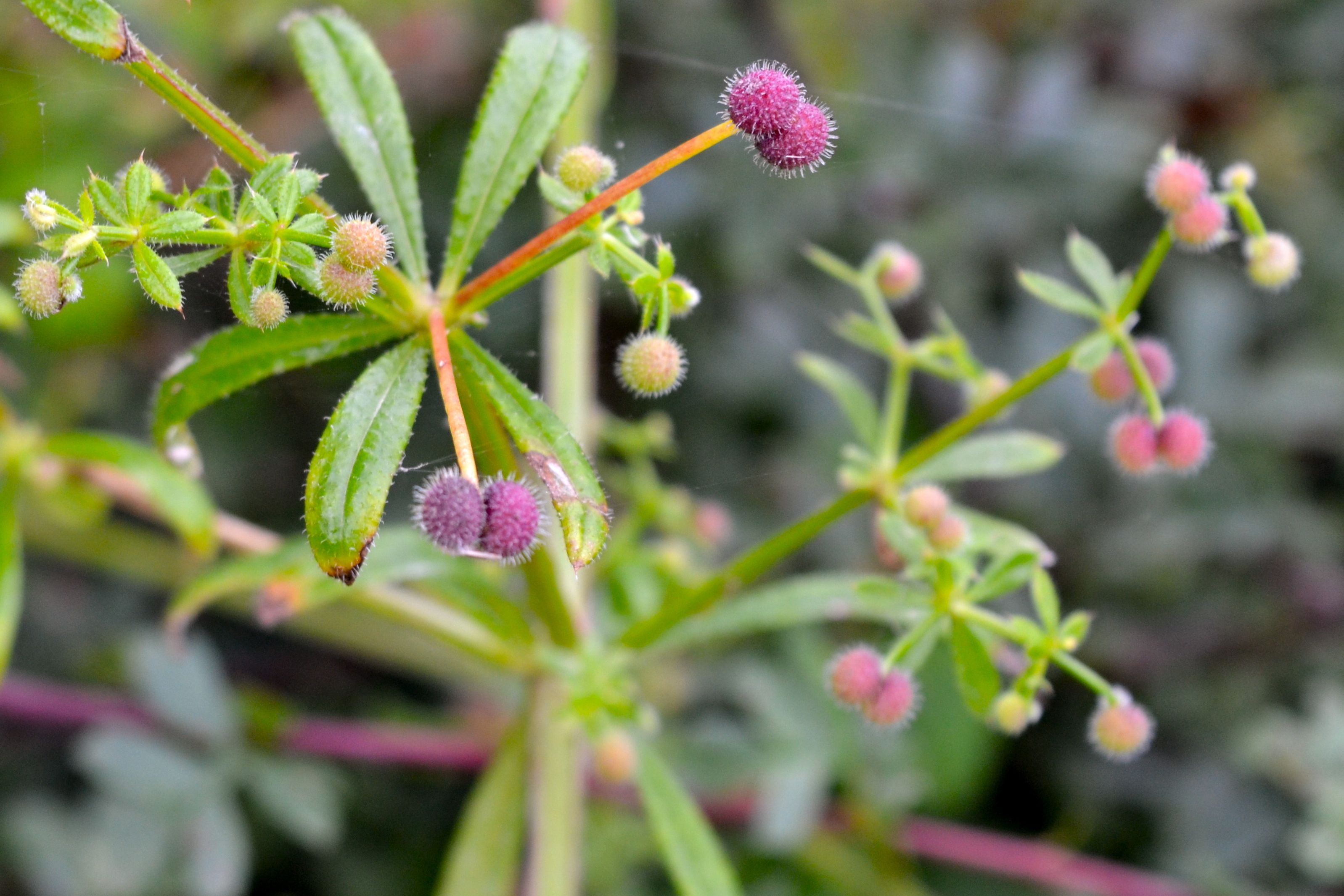There is a handful of dye plants that should be found in any dye garden. Woad is one of those, in my opinion. Woad is one of the very old cultivated dye plants – in Denmark, it has been cultivated since more than 2000 years ago. So although the plant gives rise to much less […]
Cutch extract has a huge tannin content, making it almost universally useful to the natural dyer. It can be used both as a mordant and a dye. Cutch is an extract from the acacia tree, and it has almost as many applications as it has names: cutch, catechu, kath, seesiat, kasu, cacho, terra japonica…. The […]
Leaves from Japanese indigo and woad can be for a very rapid blue dye without adding anything else. The leaves just have to be fresh picked and you need to work quickly on ice! During last summer, I experimented a bit with ice dyeing, which is a well known method for dyeing with fresh Japanese […]
This year was my first cultivating pokeberry in my dye garden. The small harvest, just a handfull of berries, turned into a fancy hot pink ink. The pokeberry plant (Phytolacca americana) grows as a weed in the eastern US, where the poisonous plant used to be eaten by poor people, who boiled it in several […]
Most sources agree that you need chalk to unlock the true reds of madder. I’ve always had a difficult time reconciling that with my own results, so experiments were called for. ~ I spent the past summer with a lot of experimental dyeing, and one of my themes was how chalk affects madder red. Earlier […]
Madder has several relatives that are also rich in useful reds. These plants are native here in Denmark, and have been used as red dyes a very long time back. Believe it or not, the year is drawing to a close. So, I want to try to summarize all the many dyeing experiments I did […]
Among some natural dyers, tansy is seen as quite boring. It’s a common plant, easy to find, easy to dye with, and it contains the so-common yellow – just like so many other plants. But tansy has a long cultural history, and its yellow dye is of high quality! ~ Tansy’s common name is simply […]
Madder is one of the most ancient dyes, and one that is described in pretty much any book on natural dyeing. But every book seems to give a slightly different method for obtaining the sought-after madder red. There’s only one thing to do – experiment! Madder was one of the first natural dyestuffs I tried […]
I return from many of my walks with pockets full of lichen windfall. One of the common finds under trees is two slightly different species of Hypogymnia, a good dye lichen. ~ Lichen windfall is perfect for dyeing, since it does no damage to just pick up the fallen lichens. I’m therefore writing a small […]
Earthballs contain a yellow-brown dye, but also a large and annoying amount of tiny, black spores. So I set out to find out if the spores contain any dye or if they could just be discarded. ~ A couple of years ago, I dyed a lot of yarn with earthballs. The color turned out a […]





